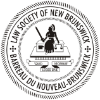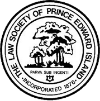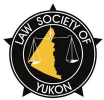Teresa Donnelly was nominated as a member of the Federation Council by the Law Society of Ontario (LSO) in 2022. She received her LL.B. from the University of Toronto, and was called to the Bar in 1991.
She was first elected as a Bencher with the LSO in 2015 and re-elected in 2019. Teresa then served as the law society Treasurer (President) for two years, becoming the fifth woman to hold the position in the 200-year history of the LSO. In that role, Teresa focused on the mental health of legal practitioners, reconciliation, the competence and ethical responsibilities of lawyers and paralegals, and the important role that paralegals play in access to justice in Ontario.
Teresa has been a lawyer with the Ontario Ministry of the Attorney General since 1994. She has been Assistant Crown Attorney in the Region of Waterloo and the County of Huron, and the Crown Attorney for the County of Huron. As West Region Sexual Violence Crown she was one of 7 full-time prosecutors in Ontario dedicated to enhancing the quality of sexual violence prosecutions and the victim’s experience in the criminal justice system. As a Crown, Teresa has been dedicated to prosecutions involving domestic and sexual violence against women and children.




















